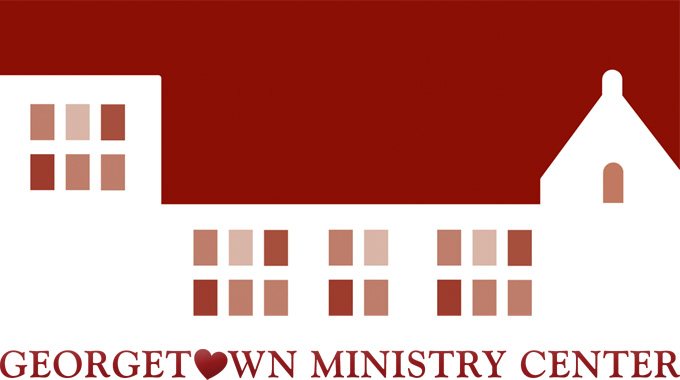Walking in Another’s Shoes
By Carolyn Landes, GMC Communications Manager

How much thought do you put into the shoes you put on your feet each morning? Maybe it’s a choice of fashion or a decision based upon the day’s weather or activities.
What if you only had one pair of shoes, though? And what if those shoes were falling apart? Imagine going about your day, less concerned with if you’d made the right choice for style or activity and more concerned with simply keeping those shoes on your feet. It’s a reality to which most of us can’t relate. For an individual experiencing homelessness, though, shoes are so much more than a fashion statement — they’re a means of survival.
On a chilly afternoon this past December, I accompanied GMC Executive Director, Gunther Stern, and GMC Consultant Psychiatrist, Dr. John Tarim, on street outreach (a program where GMC staff check on and visit with individuals experiencing homelessness outside of the Center, directly on the streets). We’d been walking for about an hour and as we made our way down a street in West End, Gunther called out a greeting to an approaching figure — a large man, well over 6 feet tall and of a stocky build, walking with a cane. To protect his privacy, we’ll call him Ed.
It was clear from Ed’s warm reception of Gunther that he was a familiar acquaintance. Despite his physically imposing frame, Ed was mild-mannered, polite and soft-spoken. Gunther and Dr. Tarim asked the usual outreach questions, inquiring about Ed’s health and wellbeing and asking if he needed any of the supplies we were carrying with us — items like granola bars, hand warmers, hand sanitizer and socks.

I happened to glance down toward Ed’s feet at the same moment Gunther asked, “How are your shoes holding up?” It was a gentle but pointed inquiry. The answer was obvious to all of us without Ed saying anything. His black, leather shoes were well beyond the point of “holding up” — they were literally falling apart. Only his left shoe had a shoelace. Threads were coming out of the seams on both soles and there were large gaping cracks in the leather on both shoes. The hole on the top of his left shoe was so large that I wondered how it was staying on his foot, let alone providing any protection from the cold.
Ed demurred the question at first but Gunther calmly persisted. “We’ll get you some shoes. What size are you?”
“Thirteen,” Ed allowed.
“Thirteen? Are you sure?”
Ed nodded. And then added softly, “Only if there’s extra.”
At that moment, I had to turn away. A large lump had formed suddenly in my throat and hot tears were stinging the corners of my eyes. Although I’d been working at GMC for 9 months by this time and had witnessed guests experiencing homelessness in difficult situations before, something about the image of Ed’s tattered shoes struck me. I felt a mix of compassion for this gentle soul — how long had he been wearing these shoes that were disintegrating on his feet? — and anger that I wasn’t sure where to direct. How were we — as a society, as fellow human beings — allowing this? How many pairs of shoes do most of us own? “Only if there’s extra.”
Our interaction with Ed was just one of many we had that afternoon. Walking for just a few hours, we were met with individual after individual — both men and women, of varying ages, backgrounds and dispositions — each with their own story. They all recognized Gunther and knew immediately why he and Dr. Tarim were there — to offer help, even if only on that day in the form of a plastic baggie filled with toiletries, snacks and socks.
The image of Ed and his broken shoes stayed with me and a couple of weeks after our encounter I inquired with Gunther about him. “Whatever happened with the guy we saw on outreach that needed the shoes?”
“Oh! He got them.”
I blinked. “He got them?”
Gunther nodded. “Yeah, I went home that night and told Alexis to pick some up in his size. She was already out shopping for the kids.”
I smiled incredulously. “And did you already get them to him?”
“I went by Miriam’s the next day.”
I don’t know how Gunther knew Ed would be at Miriam’s Kitchen, a neighboring non-profit that aids those experiencing homelessness, the next day. It was one of the many small enigmas I was perplexed by working with someone who had been doing their job for nearly 30 years — I guess, like in most jobs, some things are learned with experience.
I do know that my experience on street outreach that day cemented in my mind as an absolute surety the dire need our community has for organizations like GMC. It is our responsibility to recognize the needs of our neighbors and to help those who cannot help themselves — not to ask, “Am I my brother’s keeper?” GMC’s street outreach program ensures the most vulnerable members of our society — those who may not visit the Center, itself — receive medical care, basic necessities and a lifeline of support and other services, ready and waiting when they are ready to receive them.
Are you interested in learning more about GMC’s street outreach program? You can read more about the program here and support our efforts with a monetary donation here.


